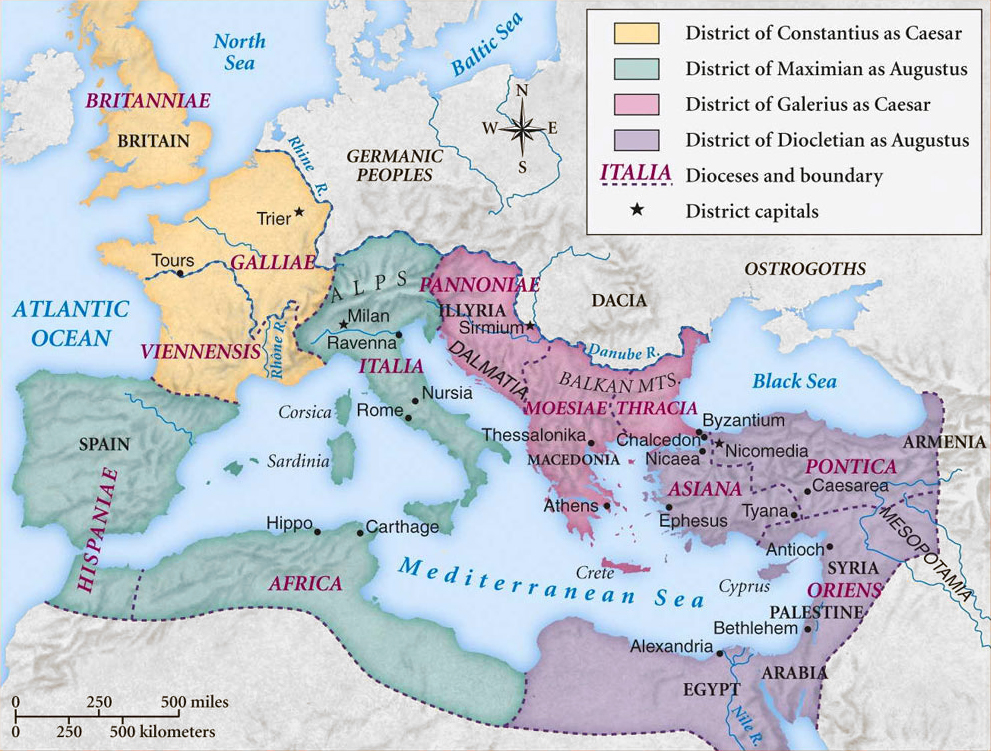
The period of the Tetrarchy in the Roman Empire began around 293 CE, twenty years into the rule of the emperor Diocletian. Due to the sheer size of the empire, Diocletian established four regions and appointed two augusti and two caesars, one to govern each section. During this time period, there was an explosion of art being produced emphasizing peace, or concordia; this trend was reflected in the coinage minted as depictions of the 4 rulers on the coins were incredibly similar. The similarities across the empire were intended to illustrate the unity of the empire despite the 4 rulers and the hierarchy of power ranking them. The tradition of deifying the emperors continues and expands during this period. Personal glory of the emperors paled in comparison to the importance of their offices. Art and coinage were produced in all quarters of the empire to convey this message.
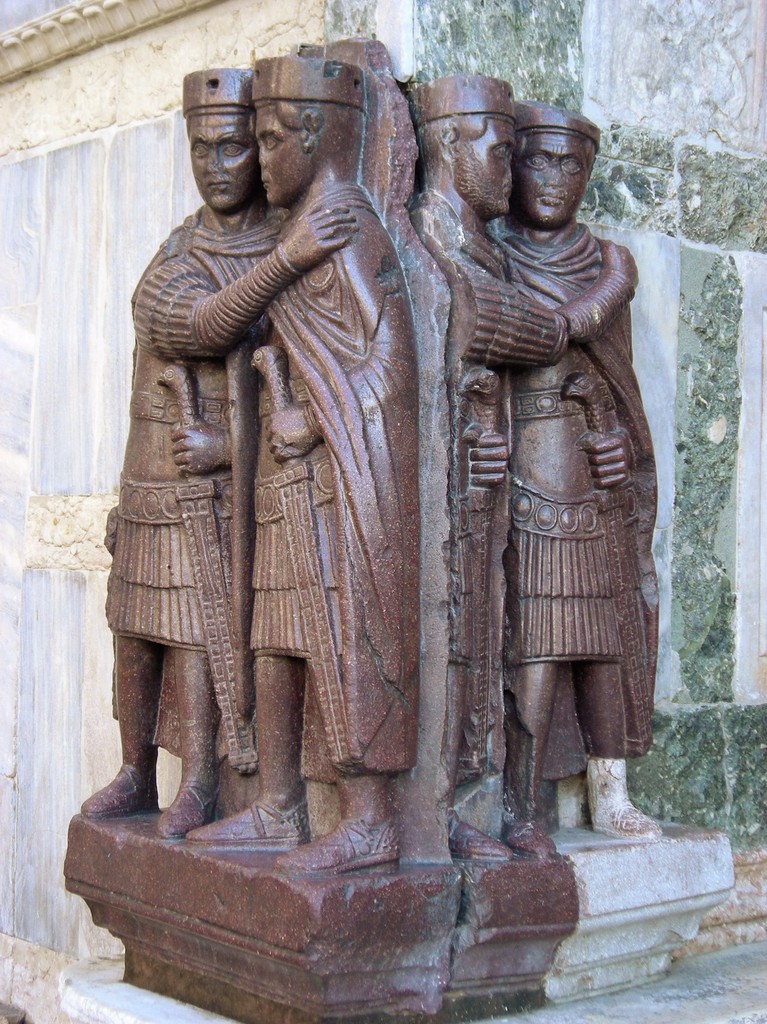
The Portrait of the Four Tetrarchs was created around 300 CE. It was made of porphyry, a type of rock including small fragments of quartz and feldspar. The statue was made originally in Alexandria but was later found in Constantinople. Each of the figures of the augusti and caesars are holding one another; the faces of the connected figures are similar yet differentiated by wrinkles and facial texture in an effort to denote differences between rank and age. As there are no carvings into the stone of hair or beards, it is believed that those details were painted onto the statues. Each of the rulers are depicted holding swords and two of the four figures are holding their neighboring figure with their right arm, likely meant to indicate the strength and congruity of the caesars and augusti.
Auben Gray Burkhart Coin Collection Coin 013
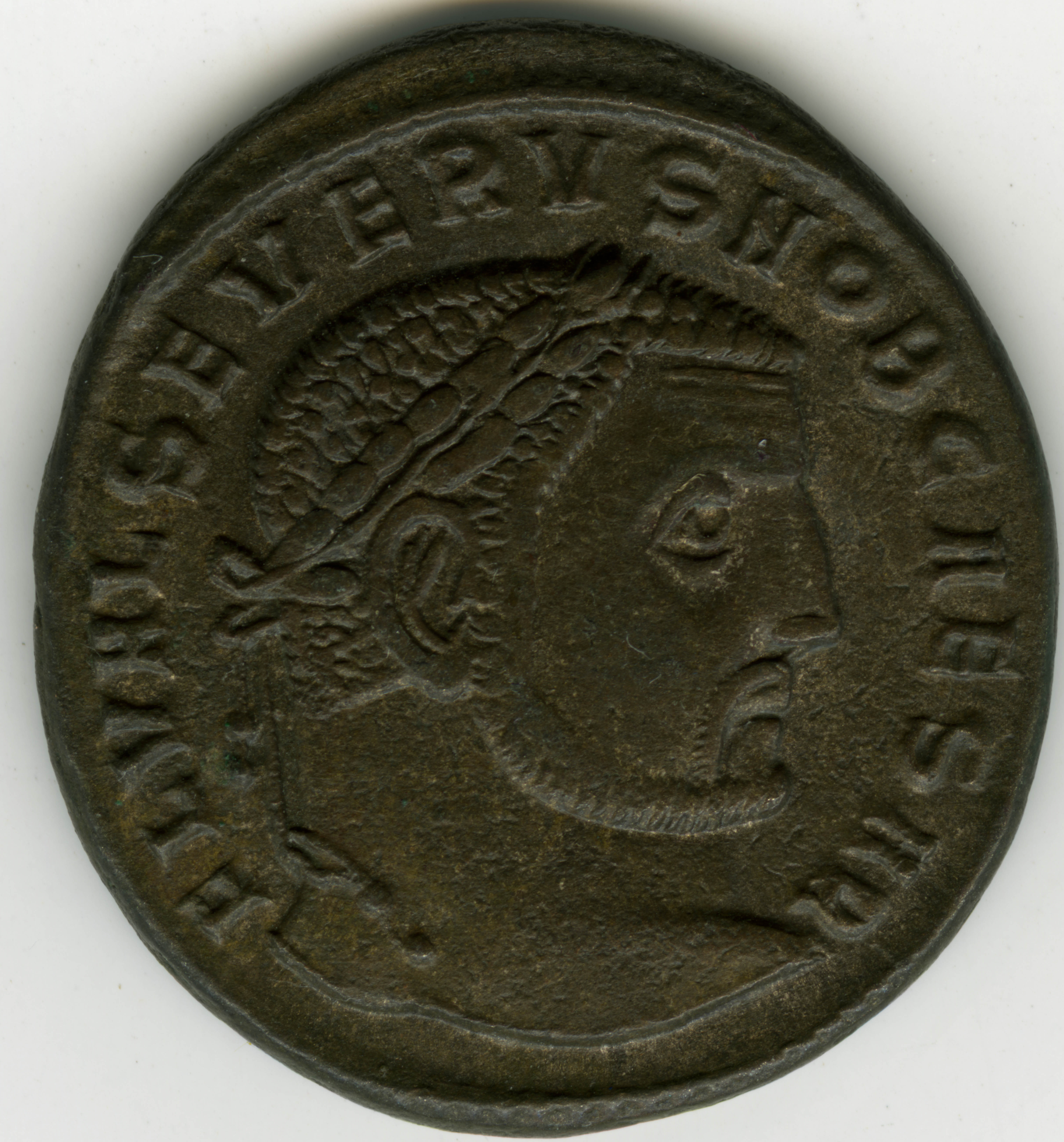
The front of the coin depicts the portrait of then-caesar Falvius Valerius Severus and is dated 305-307 CE. Falvius Valerius Severus was a revered military commander and was therefore appointed as caesar under Maximian in Milan with permission from Diocletian, a noteworthy occurrence as Maximian chose Severus over his own son Maxentius. Severus was ranked the senior caesar over Maximinus Daia as he was appointed prior; Severus was given rule over Italy and the portions of Africa under Roman rule. The coin is in good condition, with the inscription legible. The writing SEVERVS is clear to read at the top of the coin above Severus' head to indicate who the commissioner of the coin was.
Coin 067
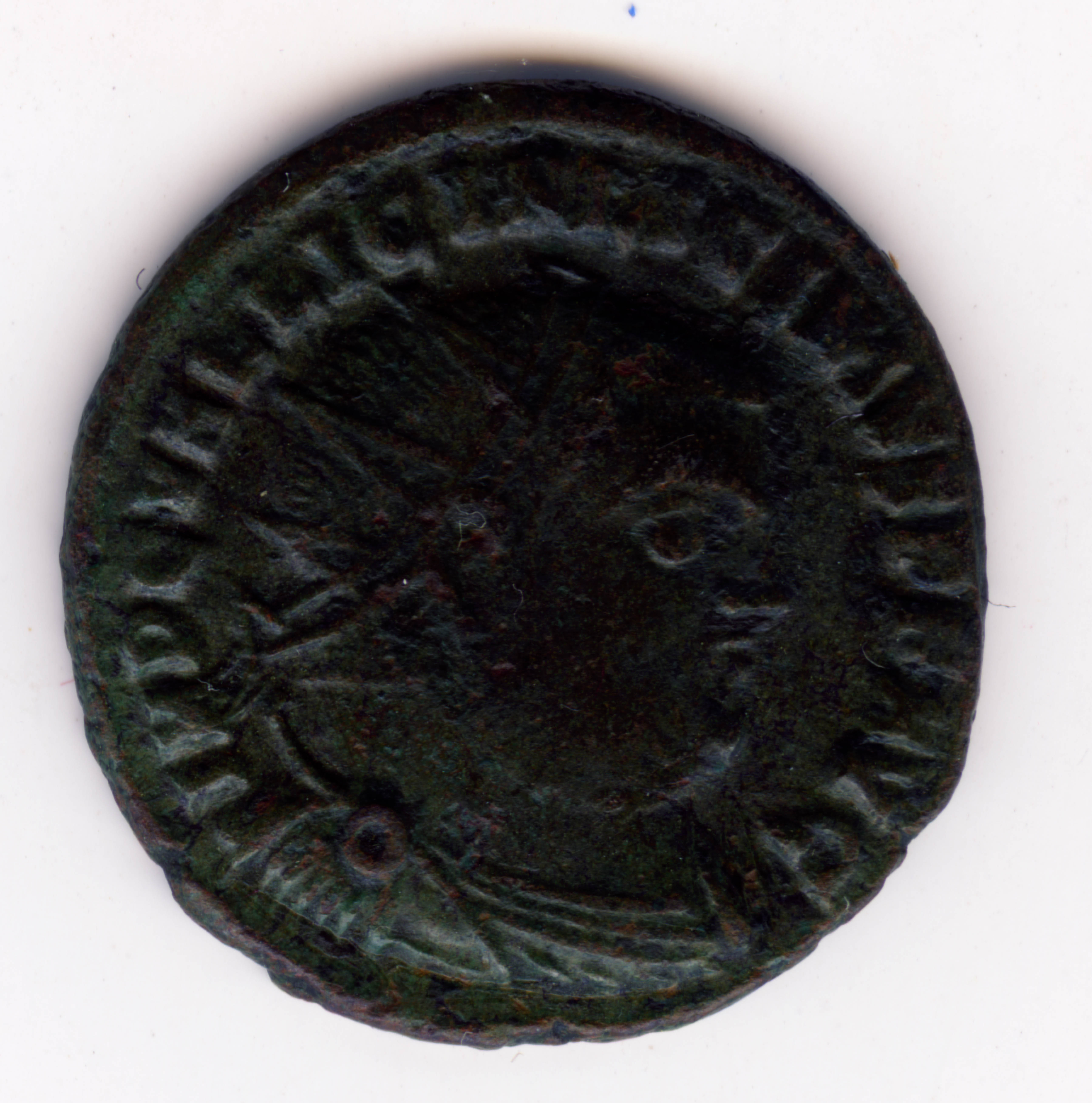
The front of the coin depicts Augustus Licinius I. It is dated between 308 and 324 CE, the entirety of his rule. Licinius was the ruler to pass the Edict of Milan, law that codified the toleration of Christianity under the Roman Empire. Constantine then fought against Licinius, whose defeat led to the eventual reunification of the Roman Empire and the end of the tetrarchy. This starts the shift to the Late Antique style in Roman art. The headpiece on Licinius has points rather than leaves or woven textures. His eye appears different to other imperial portraits on coins in the Tetrarchy, likely due to wear over time.
Coin 046
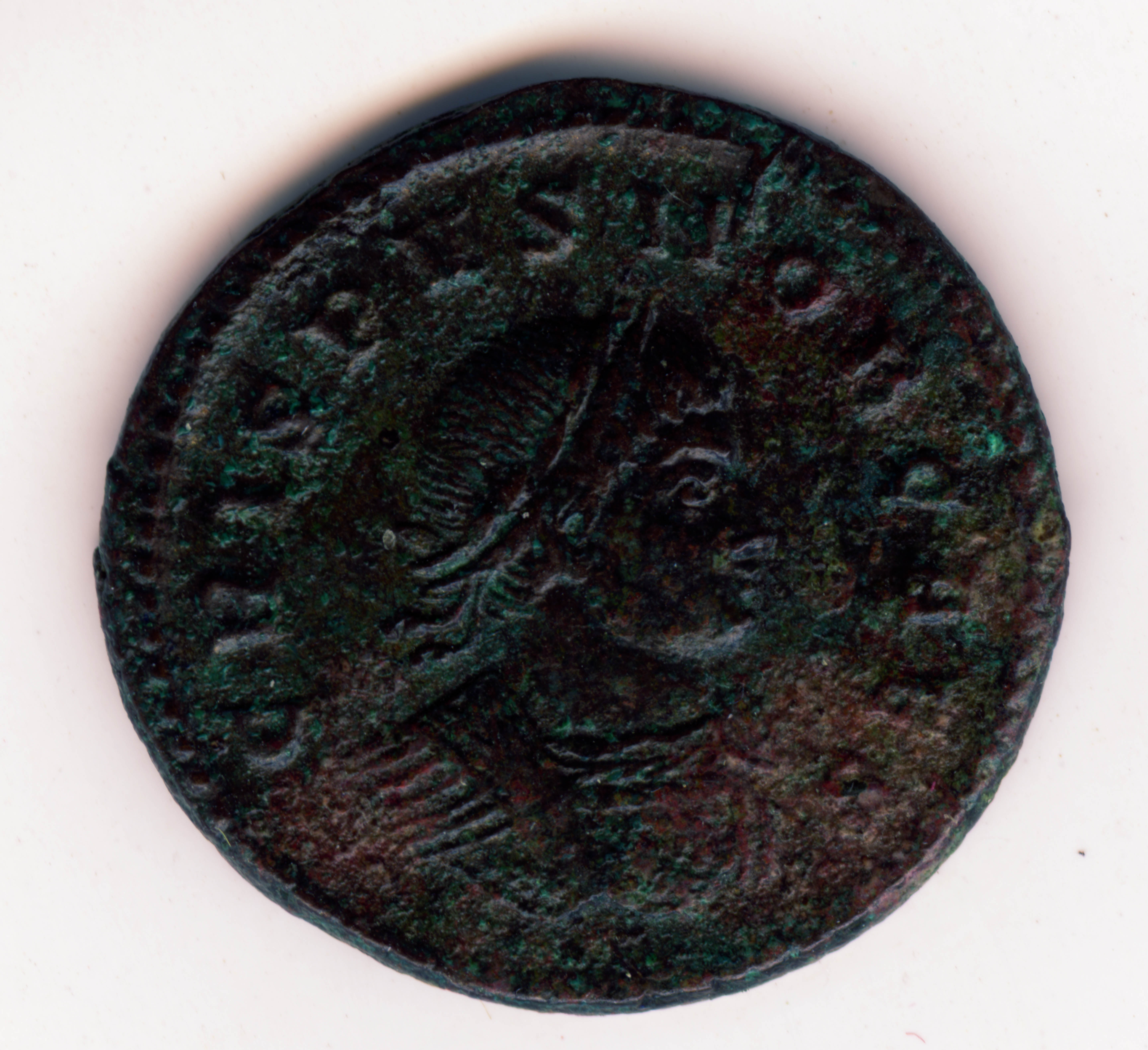
Dated around 324 CE, the front of the coin features the bust of Crispus. Crispus was the eldest son of Constantine I and Minervina, making Crispus the illegitimate heir as Constantine I went on to marry Fausta in 307 CE. Crispus was given the position of Caesar by his father in 317 CE, who would later go on to be the one to order the death of his own son Crispus in 326 CE. During the end of the Tetrarchy, Constantine and Licinius were engaged in another war, where Crispus was able to display his excellence in his military commanding. Imperial coinage under Crispus reflects his triumphs in his military career and exalts him.
Coin 034
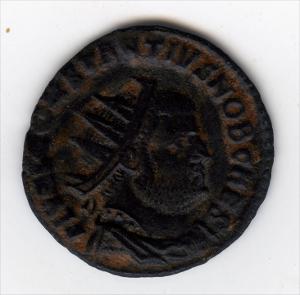
Constantinus I served as Caesar of the western part of the Tetrarchy between 293 and 305 CE. He in other coins is depicted wearing a laurel wreath, likely still illustrated here but distorted due to aging and inconsistencies. He has a broader face and head than some depictions of the other emperors in the tetrarch but mirrors other portraits where the right side of his face is to the viewer. The coin has words on it, partially missing due to damage. Constantius has a strong nose and a furrowed brow. He has a beard and his hair is straight to differentiate from other emperors while still abiding by the typical style.
Coin 068
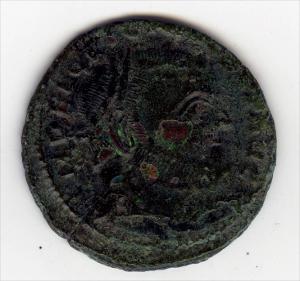
This coin also features the portrait of Licinius during his reign. The coin is worn and rusted, leaving it darkened and in parts turquoise as oxidization has occurred over time. Licinius is shown displaying his right cheek, a common orientation among imperial coinage. The inscription surrounding Licinius is faded and difficult to read but appears to be surrounded by a dotted border. Licinius wears a seemingly simple wreath on his head and has a sloped eyebrow, following the curve of his eye rather than having an arch independent of eye shape. He is shown with a beard on his face and a generally strong profile, from a noticeable nose and a strong jawline bearded.
Coin 068 Reverse
Much like the obverse of this coin, the surface of the coin has experienced some damage over time making the inscriptions difficult to read. The god Jupiter is depicted in the center of the coin holding the goddess Victory on a globe in his hand. Jupiter, referred to in Greek mythology as Zeus, is the Roman god of the sky, born of father the Titan Cronos and mother the Titan Rhea. He was king to many other gods and ruled on Mount Olympus, represented by the planet Jupiter, the largest planet in the solar system. The goddess Victory also possesses the Greek name Nike. Victory has wings, as illustrated on the coin, and is the goddess who usually sides with the victor in war or conquest.
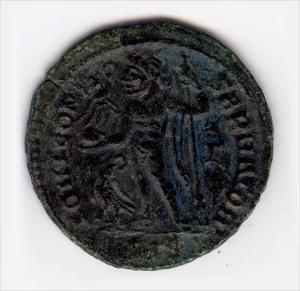
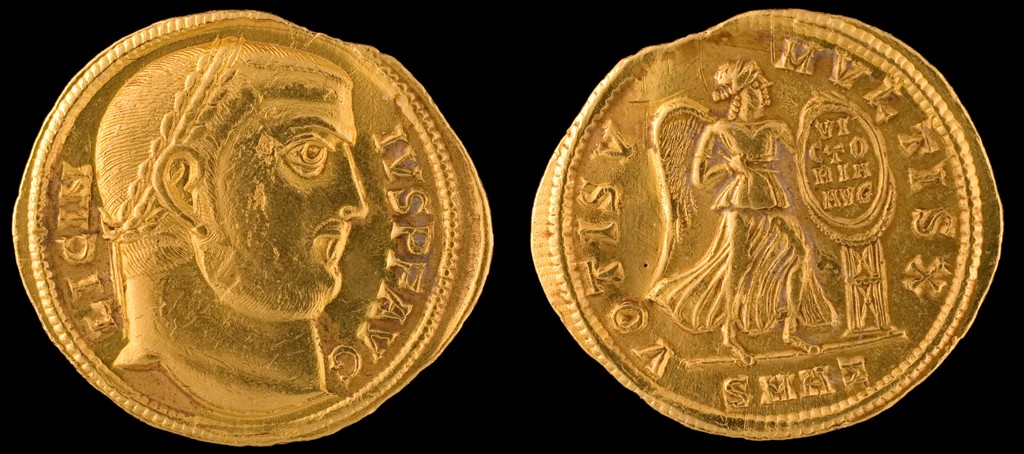
Lawrence University and Buerger Coin Collection Image
The words on both the front and back of a coin offer important details showing the image that the empire desired to be projected during a certain period. On the obverse side, the words "LICINIVS P(IVS) F(ELIX) AVG(VSTVS), meaning "Licinius pious and happy Augustus." On the reverse of the coin are inscriptions both surrounding the figure with wings and on the shield that the goddess Victory holds, the first reading VOTIS V MVLTIS X, meaning 5 years of rule; the text in the shield reads VICTORIA AVG(VSTVS), meaning Victorious Augustus. Illustrations of Roman mythology highlight the deification of the emperors and the goddess Victory symbolizes the strength and success of the empire.
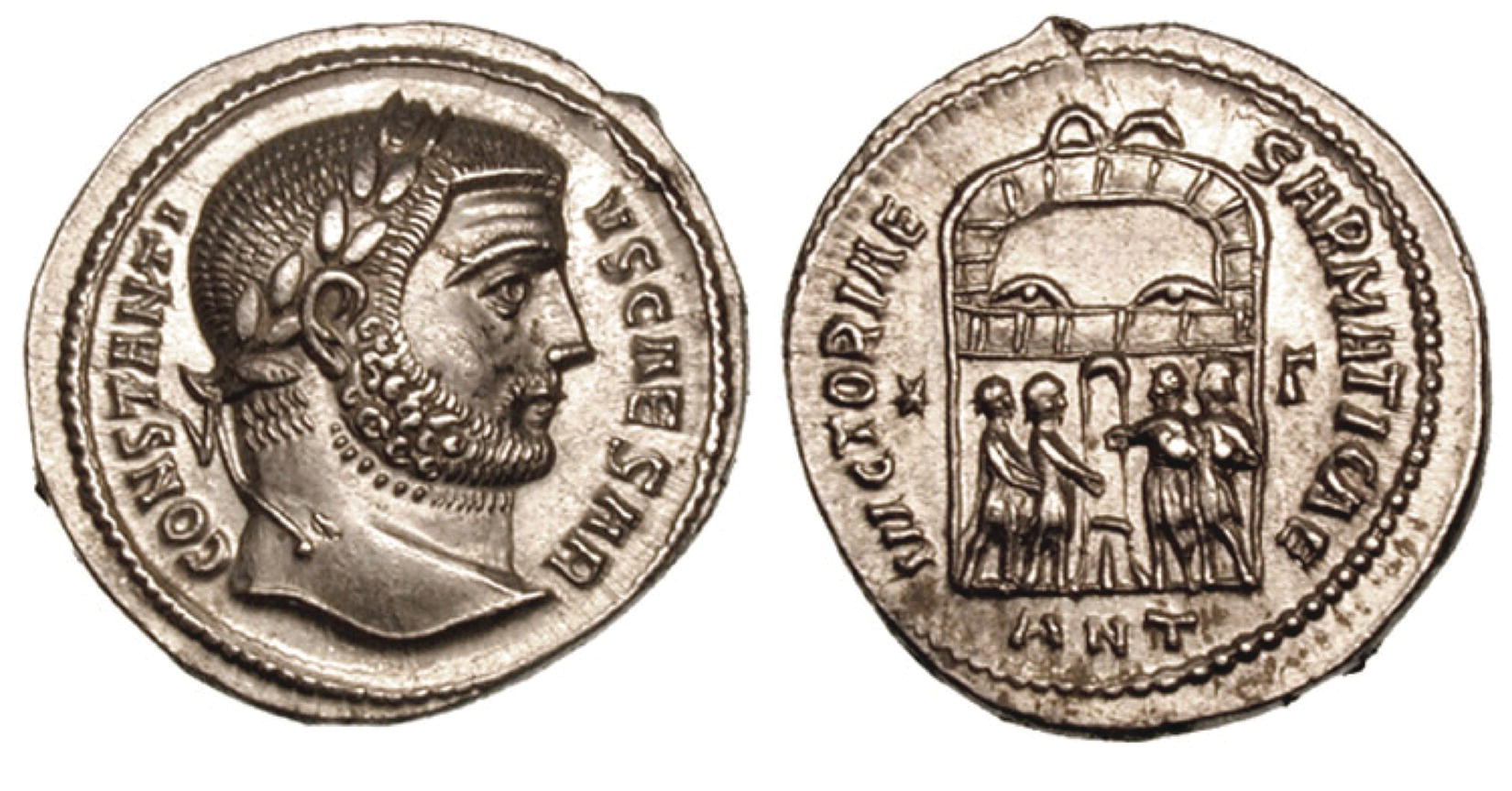
Classical Numismatic Group, Inc.
This image shows the obverse and reverse of a coin produced between 293 and 305 CE of the Caesar Constantius. Surrounding the image of the caesar is clearly the text CONSTANTI. Constantius wears a wreath of leaves on his head. On the back of the coin, all four tetrarchs are shown together in celebration. The rulers are standing together at an altar, likely giving a sacrifice in order to thank the gods for their military victory. In addition to the tetrarchs are the words "VICTORIAE SARMATICAE," indicating a victory in battle with the Sarmatians. By representing all the tetrarchs, there is the continued artistic theme of imperial unity.
Page Completed by Audrey Bishop, Rhodes College '25